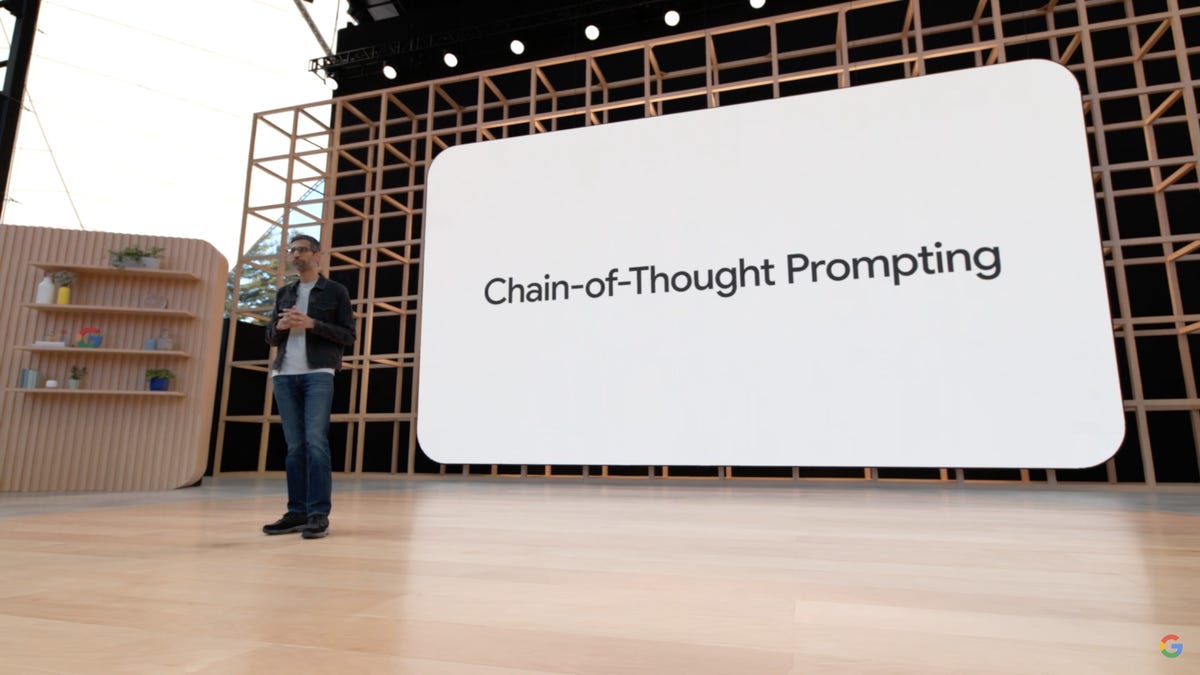Google's Latest AI Model Can Be Taught How to Solve Problems
It can be taught how to solve math-word problems, and even how to translate a different language.

Google's new AI can be taught how to solve problems using chain-of-thought prompting.
Google's latest AI model, called the Pathways Language Model, uses chain-of-thought prompting to learn how to solve problems, the company announced at its Google I/O 2022 event Wednesday.
"Chain-of-thought prompting allows us to describe multistep problems as a series of intermediate steps," Google CEO Sundar Pichai said. "Kinda like when your teacher gives you a step-by-step example to help you understand how to solve a problem."
Pichai said usually you would give an AI a question and an answer to use as a key for any future questions you might ask. In chain-of-thought-prompting you still give an AI a question and answer, but you also show the steps you took to reach that answer. Like when you had to show your work on a math-word problem in school.
With a question, answer and steps showing how the answer was reached, Google's latest AI can solve this math-word problem.
This technique can also be used to teach the AI different languages, so someone who speaks a less-represented language can still access information. In an example, Pichai showed how the AI can learn Bengali from English the same way it learned how to solve math-word problems.
"Just like before we prompt the model with two examples of questions, in Bengali with both Bengali and English answers," Pichai said. "That's it. Now we can start asking questions in Bengali."
Teaching Google's latest AI Bengali.
While this technique increases the chances of AI getting an answer correct, it's not perfect. Research from Cornell University found this technique improves an AI's chances of answering a complex problem to about 58%. Previous models that didn't use this technique were expected to give a correct answer about 18% of the time.
"We're so optimistic about the potential for language models," Pichai said. "One day we hope we can answer questions on more topics in any language you speak, making knowledge even more accessible in search across all of Google."

